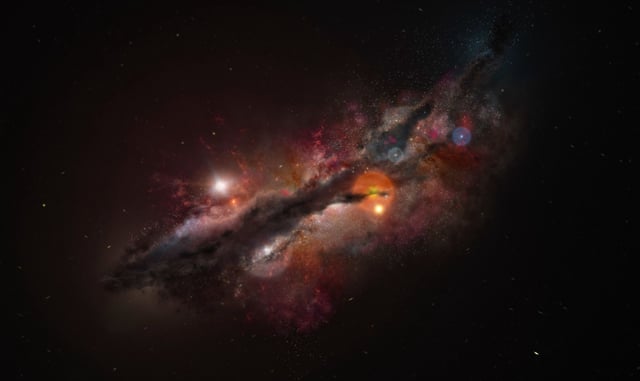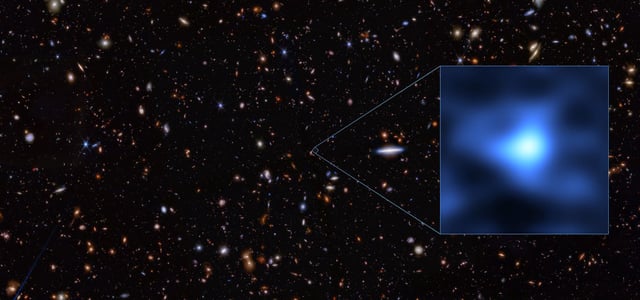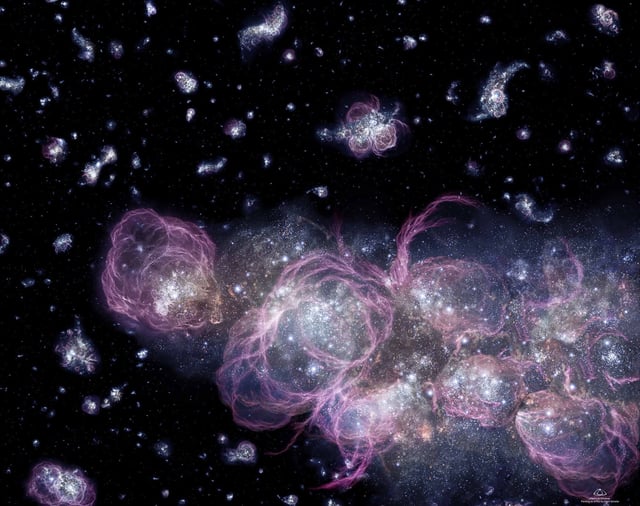Overview
- JADES-GS-z14-0, located 13.4 billion light-years away, is the most distant confirmed galaxy, observed as it existed during the Cosmic Dawn.
- Astronomers using ALMA and JWST detected oxygen and heavy elements, suggesting rapid chemical enrichment in the galaxy's early stages.
- The galaxy contains 10 times more heavy elements than expected for its age, challenging existing models of galaxy formation and evolution.
- The detection allowed astronomers to refine the galaxy's redshift to 14.18 with unprecedented precision, improving distance measurements.
- The findings raise questions about the processes driving early galaxy formation and suggest the need to revise cosmological models.


